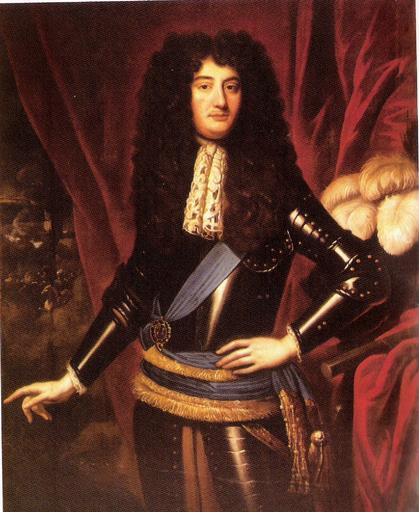MAKE A MEME
View Large Image

| View Original: | William_Douglas-Hamilton,_Duke_of_Hamilton.jpg (869x1062) | |||
| Download: | Original | Medium | Small | Thumb |
| Courtesy of: | www.flickr.com | More Like This | ||
| Keywords: portrait stuart tudor 16th century 16thcentury 7th century 7thcentury britain england scotland nobility people indoor William Douglas-Hamilton, Duke of Hamilton, KG, PC (24 December 1634 – 18 April 1694), born Lord William Douglas, was the son of William Douglas, 1st Marquess of Douglas and his second wife Lady Mary Gordon. Both he and his wife, Anne Hamilton were 4th Great-Grandchildren of James IV through two of his illegitimate daughters. Lord William Douglas was created Earl of Selkirk in 1646 at the age of 11. Lord Selkirk married Anne Hamilton, Duchess of Hamilton on April 29, 1656. He was created Duke of Hamilton in 1660 on the petition of his wife, Anne Hamilton, suo jure Duchess of Hamilton (daughter of the 1st Duke), receiving also several of the other Hamilton peerages, but for his life only and on the assumption of the surname Douglas-Hamilton for himself and his descendants. The Hamilton estates had been declared forfeit by Oliver Cromwell after the activities of his wife's father and uncle in the Wars of the Three Kingdoms, (James 1st Duke of Hamilton was executed in 1643, and William, 2nd Duke of Hamilton died at Worcester in 1651). Selkirk himself had been fined £1000. However the lands were restored by 1657 after much machinations with the Protectorate. William supported Lauderdale in the early stages of his Scottish policy, in which he adopted a moderate attitude towards the Presbyterians, but the two were soon alienated, through the influence of the Countess of Dysart, according to Gilbert Burnet, who spent much time at Hamilton Palace in arranging the Hamilton papers. With other Scottish noblemen who resisted Lauderdale’s measures Hamilton was twice summoned to London to present his case at court, but without obtaining any result. He was dismissed from the Privy Council in 1676, and on a subsequent visit to London, Charles II refused to receive him. On the accession of James II he received numerous honours, but he was one of the first to enter into communication with the Prince of Orange. He presided over the convention of Edinburgh, summoned at his request, which offered the Scottish crown to William and Mary in March 1689. His death took place at Holyrood on April 18, 1694. His wife survived until April 17, 1716. William Douglas-Hamilton, Duke of Hamilton, KG, PC (24 December 1634 – 18 April 1694), born Lord William Douglas, was the son of William Douglas, 1st Marquess of Douglas and his second wife Lady Mary Gordon. Both he and his wife, Anne Hamilton were 4th Great-Grandchildren of James IV through two of his illegitimate daughters. Lord William Douglas was created Earl of Selkirk in 1646 at the age of 11. Lord Selkirk married Anne Hamilton, Duchess of Hamilton on April 29, 1656. He was created Duke of Hamilton in 1660 on the petition of his wife, Anne Hamilton, suo jure Duchess of Hamilton (daughter of the 1st Duke), receiving also several of the other Hamilton peerages, but for his life only and on the assumption of the surname Douglas-Hamilton for himself and his descendants. The Hamilton estates had been declared forfeit by Oliver Cromwell after the activities of his wife's father and uncle in the Wars of the Three Kingdoms, (James 1st Duke of Hamilton was executed in 1643, and William, 2nd Duke of Hamilton died at Worcester in 1651). Selkirk himself had been fined £1000. However the lands were restored by 1657 after much machinations with the Protectorate. William supported Lauderdale in the early stages of his Scottish policy, in which he adopted a moderate attitude towards the Presbyterians, but the two were soon alienated, through the influence of the Countess of Dysart, according to Gilbert Burnet, who spent much time at Hamilton Palace in arranging the Hamilton papers. With other Scottish noblemen who resisted Lauderdale’s measures Hamilton was twice summoned to London to present his case at court, but without obtaining any result. He was dismissed from the Privy Council in 1676, and on a subsequent visit to London, Charles II refused to receive him. On the accession of James II he received numerous honours, but he was one of the first to enter into communication with the Prince of Orange. He presided over the convention of Edinburgh, summoned at his request, which offered the Scottish crown to William and Mary in March 1689. His death took place at Holyrood on April 18, 1694. His wife survived until April 17, 1716. | ||||